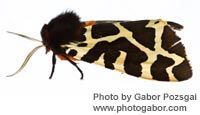 This page has been mothballed.
This page has been mothballed.
It is no longer being updated but we've left it here for reference.
Modelling the role of stores and reserves in grassland plants

- Collaborators
- Institute of Low Temperature Science, University of Hokkaido, Japan
- Macaulay Contacts
Hokkaido's climate and flora have similarities with those of Scotland, but Hokkaido has a relatively short history of human impact and rich volcanic soil, so that its unenclosed land is predominantly forest. The Japanese flora is very diverse and influenced by habitats and factors unfamiliar in Britain, such as volcanoes and prolonged, deep snow cover. This project provided an exciting opportunity to exchange ideas about grassland ecology, see familiar species from British grasslands in natural habitats (no longer possible in Britain), and study the indigenous grassland vegetation of Japan, which appears to be a neglected resource.
 Recent research and
modelling at the Institute has emphasized the roles of storage and
remobilization of photo-assimilates and nutrients in the recovery of grassland
plants from grazing damage. In Japan, Dr Suzuki has been studying the role of
storage in perenniality and species coexistence. The Anglo-Japanese
collaboration developed ideas about links between allocation, morphology and
ecology. Professor Hara and Dr Suzuki are establishing a new molecular biology
laboratory to study local and regional genetic variation in plants. Dr Li was
conducting experiments using genotypes of Arabidopsis thaliana from an
international collection to study the interactions between known genetically
determined life-history traits, defoliation and competition. This use of
selected genotypes was unusual in a study of life history and fitness. Macaulay
staff used a model of grazing impacts to predict the likely results of Dr Li's
proposed defoliation treatments.
Recent research and
modelling at the Institute has emphasized the roles of storage and
remobilization of photo-assimilates and nutrients in the recovery of grassland
plants from grazing damage. In Japan, Dr Suzuki has been studying the role of
storage in perenniality and species coexistence. The Anglo-Japanese
collaboration developed ideas about links between allocation, morphology and
ecology. Professor Hara and Dr Suzuki are establishing a new molecular biology
laboratory to study local and regional genetic variation in plants. Dr Li was
conducting experiments using genotypes of Arabidopsis thaliana from an
international collection to study the interactions between known genetically
determined life-history traits, defoliation and competition. This use of
selected genotypes was unusual in a study of life history and fitness. Macaulay
staff used a model of grazing impacts to predict the likely results of Dr Li's
proposed defoliation treatments.
 The complex
morphology of grasses makes it difficult to develop and test mathematical or
simulation models of grazing impacts on them. Differences between experimental
observations and model predictions may result from fundamental flaws in model
assumptions, failures of the model to include processes peripheral to the main
focus of interest, or merely inaccurate estimation of model parameters.
The complex
morphology of grasses makes it difficult to develop and test mathematical or
simulation models of grazing impacts on them. Differences between experimental
observations and model predictions may result from fundamental flaws in model
assumptions, failures of the model to include processes peripheral to the main
focus of interest, or merely inaccurate estimation of model parameters.
In contrast to Britain, Japan has a rich flora of spring ephemeral species that are potentially valuable model plants for testing growth models. For example, Erythronium japonicum (the Japanese dog-tooth violet) can consist entirely of a bulb in winter and a bulb, roots and a single leaf in spring. Numerous other species have individuals or units that are almost as simple and determinate. However, leaf expansion and growth in these species would need to be substantially self-supporting for these species to provide useful analogues of grass growth. Repeated measurements on plants of several species in the University of Hokkaido's botanic garden and in a local forest allowed identification of the timing of the end of leaf expansion. A small experimental study was also made on the effect of imposing deep shade on the leaf expansion over 48 hours of a population of E. japonicum in an experimental forest at Moshiri in northern Hokkaido (Figure 1). Shading did not affect increases in leaf area, but reduced leaf mass. These results suggest that these species can be useful for future model development in Britain and Japan.

